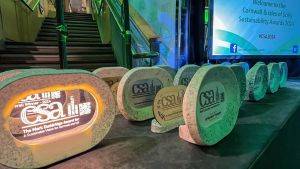Recovery of the Rugezi Mire
Description
The Rugezi Marsh is a peatland located in the north of Rwanda, to the east of Lake Bulera on the Uganda border. It is at an altitude of approximately 2050 m and in its natural state, this fen forms a dense floating mat on a 7-12 m peat layer in its deeper parts. The marsh plays a major role in the regulation of water flow to Burera and Ruhondo Lakes, which is the main source of hydropower in Rwanda. However, the increased demand for water and electricity for a growing population has resulted in a decrease in the amount of water in Rugezi Marsh. In the 2000’s, the fen was affected by lowering water level and sedimentation. This happened due to degradation over the years caused by a variety of activities, including agricultural practices, draining of the area, fire and over-exploitation of non-timber forest products. Different illegal activities have also been noted, including grass cutting, illegal fishing, and the trade of Grey Crowned Crane chicks. By 2003, almost 56% of the swamp was destroyed by agricultural activities. The northern sector of the mire was particularly degraded by human activity, including agriculture and livestock grazing. Previously covered by papyrus, the area has changed dramatically over the last 10 years. Formerly a stronghold for papyrus endemic birds, it is now poor in terms of biological diversity with a lower water table level.
Project Aims
To conserve the habitat, draining and cultivation was prohibited in the most affected areas. A 20-50 m buffer zone was established around the mire consisting of Alnusa cuminata trees and agricultural activities were forbidden in all areas. The Alnus cuminata is native to the American continent and grows well in moist soil environments, such as the Rugezi mire. As well as acting as a buffer, this tree is valued for its wood, which dries easily and preserves well. It is therefore not only durable but easy to work and can be used for fuel wood, construction purposes and day-to-day items such as posts, poles and broom handles.
Restoration Delivered
The Rugezi mire has recovered well in the past 10 years. The water quality from the recovered area has improved remarkably compared to the northern sector still being cultivated, and the hydropower again has a sustained flow of water. The drained sections of the Rugezi fen (the Kamiranzovu and northern parts of the main trunk) are ideal sites for rewetting and other peatland restoration activities. However, the dependency of local communities on cultivation within the marsh, especially the Kamiranzovu section, will make this a daunting task. Future conservation efforts will have to include a strong socio-economic focus in all stages of planning and implementation.
Project Name: Recovery of the Rugezi Mire
Organisation / Lead partner: Rwandan Government
Predominately: Upland










